- Home
- Clive Cussler
Piranha Page 17
Piranha Read online
Page 17
Juan frowned. “We were attacked in five different locations at the same time. That took detailed intelligence to coordinate.”
“Everyone could have been tailed from the ship,” Eric offered.
“One or even two of us could have been followed. But all five groups? And they’d have to know where we were going to be ready for us in Montego Bay with considerable firepower to take us down.”
“Besides,” Murph said, “how could anyone know the two of us would be exposed on deck? Someone had to scout out that oil tank to snipe from.”
“So we have no network penetration and no one listening into our meetings with bugs,” Juan said. “I’m looking for any other explanation for how the information about where we’d be could have made it into the wrong hands.”
Eric stared in disbelief. “You mean we might have a spy on board?”
Juan sighed heavily. “We haven’t had a new crew member in over a year. We’ve vetted everybody, both financially and personally. I don’t see how it’s possible.”
“Do you want me to start looking into the crew members who weren’t targeted today?”
Juan shook his head. “Not yet. I can’t accept that we have a traitor on the Oregon, and going down that path will start making everyone paranoid. We work and live together too closely to be suspicious of each other. It would destroy us as a unit. I want another explanation.”
“But how could they have known where we’d be unless they were in the room when we were talking about it?”
Juan was grasping for any explanation that didn’t involve a witch hunt, and it couldn’t hurt to take precautions. “We might get more answers about how it was done if we knew who’d done it.”
The two of them shrugged and Juan left. His next stop was the op center, where he found MacD and Hali Kasim listening to headphones with both hands on their ears.
Juan leaned against the console. “Is this the recording Eddie made?”
Hali nodded. “MacD thinks he can translate what the guy was saying.”
“Anything useful?”
MacD shrugged, which seemed to be his crew’s favorite new gesture. “It sounds like the guy was delirious. Eddie said he hit the ground pretty hard with his head before he died.”
“What’s he saying?”
“Just one sentence over and over. ‘The doctor’—whoever he is—‘promised the world would be different in four days.’ He says it like he’s sorry he wouldn’t live to see it. Does that phrase mean anything to you?”
Juan joined in the shrugfest. “It sounds ominous.”
“Maybe he was being treated for some condition,” Hali said.
“Then why does he say ‘the world would be different’?”
“Maybe he means his world.”
“Nope,” MacD said, “he’s definitely saying the world.”
“That still doesn’t answer why he and his friends would want us out of the way,” Juan said.
“Could be they think we know something about this doctor.”
“Or about what happens in four days,” Hali said.
“If anyone has any theories,” Juan said, “I’m all ears.”
Linda came up and handed Juan several sheets of paper. “We just got this from the CIA. It’s a preliminary list of everything newsworthy that happened on the dates found on the phone you took from that Venezuelan Navy lieutenant. They’re doing more in-depth analysis on it right now.”
Juan saw the four Greek letters and codes, each paired with a date, but they seemed as inscrutable now as they were the day Murph and Eric hacked into the phone. Alpha 17, Beta 19, Gamma 22. Delta 23, the fourth in the series, corresponded to today’s date.
“Did they find any correlation?”
“The CIA checked for every series progression they could think of. Nothing fit. And there doesn’t seem to be anything that ties the dates together.”
Juan scanned the list of events. It included a wide variety of possibilities and spanned the entire world: murders, traffic fatalities, political speeches and rallies, weather phenomena, terrorist bombings, sports events. None of them fit a pattern that Juan could see.
One item caught his eye: a ship sinking. Most of the general public doesn’t realize how regularly ships on the high seas go down. During an average year, more than a hundred ships sink, sending two thousand sailors to a watery grave. Even in the age of GPS tracking, weather forecasting, and satellite communications, many of the ships disappear without a trace, falling prey to mechanical failures, fire, storms, and rogue waves.
The listed ship fit into the Gamma 22 spot. She was a cargo vessel named Santa Cruz that went down with all hands.
The number of crew was twenty-two.
Juan felt the hairs on his neck prickle.
“What about this one?” Juan said, pointing at the shipwreck listing.
“Santa Cruz?” Linda said. “The CIA thinks the fact that it had twenty-two crew is a coincidence. The analyst told me it’s easy to find random numerical links to anything. On the Alpha seventeen date, there was a traffic pileup in New York that involved seventeen vehicles and a snowstorm in Calgary where they received seventeen inches of snow.”
“It’s the Santa Cruz name that bugs me. Humor me.”
They went over to her terminal, where she had a remote link to a worldwide ship database. She punched in Santa Cruz.
“She was flagged Panamanian, but was owned by a Venezuelan company called Cabimas Shipping. The company’s owner is one of the richest men in Venezuela, Ricardo Leal.” She did a quick search and found thousands of mentions of his name. “Seems like Mr. Leal has political aspirations in his country. Many are expecting him to use his wealth to run for president next year.”
Juan looked at the list again and realized what the link was between them.
“Linda, check the database for all the ships that have sunk in the last three months.”
“Even though there aren’t any other ships on the CIA’s list?”
“The dates that they sunk and the dates they were reported missing could be different. Sometimes a ship isn’t considered missing for a couple of days after it misses a scheduled check-in.”
Linda brought up the list and they compared it to the numbers on the phone list. She gasped when she saw how they matched up.
The numbers weren’t a progression. The lieutenant was keeping track of how many crew members were on each ship.
Alpha 17—Cantaura, a containership lost off of Portugal with seventeen crew.
Beta 19—Tucupita, a tanker reporting missing with nineteen crew members as it was rounding Cape Horn.
Gamma 22—Santa Cruz and its twenty-two men disappeared in the middle of the Atlantic.
All of them belonged to Cabimas Shipping. The first two didn’t broadcast any kind of Mayday or indicate anything was wrong before contact was lost. They simply vanished.
“Three ships disappeared in three months?” Linda asked. “That can’t be chance.”
“I’m sure Leal’s insurer is saying the same thing. They must think he’s deliberately sinking his ships or they’ve become so ill-maintained that they’re falling apart. Either way, it would make him uninsurable. Without insurance, no one would send freight with his company ever again.”
“Do you think Ruiz is targeting his ships?”
“It’s possible. If she has political ambitions of her own, what better way to get rid of her biggest rival than to bankrupt him?”
“He must be teetering on the edge of that now,” Linda said.
“One more sinking might do it,” Juan said. “Check the crew complements on the rest of his ships to see if we get a match.”
The answer came back immediately. Only one Cabimas ship had exactly twenty-three crew: a car carrier named Ciudad Bolívar.
“Where is she now?”
> Linda queried the Marine Traffic database. “She departed Veracruz, Mexico, two days ago with a load of cars and construction equipment. Her destination is Puerto Cabello, Venezuela.”
“Which would put her a few hundred miles due south of Jamaica,” Juan said. “We just found our answer.”
“To what?”
“To the question of why someone was trying to kill us,” Juan said. “Ruiz is planning to sink the Ciudad Bolívar today and we’re the only ones capable of stopping it.”
Maria Sandoval was nearly done with her daily inspection of the Ciudad Bolívar’s vehicle decks. As the master of the ship, her responsibility was to make sure her cargo arrived safely, so she regularly checked the condition of the interior to make sure there were no leaks in the fully enclosed decks that could allow salt water to damage the shipment and to verify that everything remained in its proper place.
The Ciudad Bolívar was the pride of the Cabimas fleet. At 700 feet long and eleven stories high, she could transport up to five thousand cars, primarily serving the growing South American market. Her current load had significantly fewer vehicles because the ceiling of deck 10 had been hoisted to accommodate large construction equipment—graders, backhoes, mobile cranes, dump trucks, bulldozers—all destined for Brazil. The deck below this one was dedicated to cars and SUVs bound for Venezuela and Argentina.
The total value of her shipment was over one hundred and fifty million dollars, and Maria took her responsibility for its care seriously. Her short dark hair and round face made her look younger than her thirty-eight years, and burly new crew members tended to underestimate her when she met them, in her nondescript trousers and unrevealing light sweater. She ran a tight ship, for her first command, driven by the pressure to succeed as the company’s only female captain. With the loss of three Cabimas vessels in the last three months, the crew was edgy, and Maria had spent plenty of restless nights worried about her ship, so she was especially attuned to anything that might pose a hazard.
The construction vehicles stretched out in long rows, parked side by side with inches to spare, maximizing the usable capacity in the cavernous, well-lit interior. Maria was the sole occupant of the hold. Even with the vibration of the ship’s engines and the rumble of the air-handling system, the lack of any other sound in the gigantic space was eerie.
She tested the tie-downs on random vehicles, which had been driven into place on the roll on/roll off ship. She knew her men inspected them on a periodic basis, but she liked to go over their work to ensure that their reports were accurate. If any vehicle came loose in heavy seas, particularly ones like these that weighed upward of fifty tons, it could wreak major damage on the cargo or start a fire.
While the smaller vehicles were secured with canvas straps, those for construction were cinched down with heavy steel chains. Nothing short of a Category 5 hurricane would be able to budge them, and the forecast called for smooth sailing until they reached Puerto Cabello.
Maria finished her assessment and was pleased with the results. She expected a lot from her crew and they never let her down.
She was walking toward the stairs to the bridge when she heard a grinding sound. But it wasn’t coming from the engine. It seemed to be emanating from the hull itself.
Before she could move, the shipwide klaxon shrieked, causing her to instinctively cringe. Instead of short bursts indicating fire, the horn sounded in lengthy peals.
There was a hull breach. The ship was taking on water.
The list would have been imperceptible to anyone not as familiar with the ship as she was, but Maria could feel the slightest tilt to port. She raced to the stairs, pulling the walkie-talkie from her waistband.
“Jorge!” she yelled over the wail of the klaxon echoing in the stairwell. “Report!”
She pressed it to her ear and could tell that Jorge, her executive officer, was responding, but the klaxon drowned out the words.
“All stop!” she shouted, and didn’t listen for an answer.
Maria sprinted up the ten flights and flung the bridge door open, panting from the exertion as she entered. The ship was slowing, the controls set to stop as she’d ordered. Three men were on the bridge: Jorge; the navigator, Miguel; and the helmsman, Roberto. They were moving efficiently, no panic evident, but stress oozed from their pores.
Jorge, a balding man ten years her senior with a potbelly and a goatee, looked at her in utter confusion.
“What did we hit?” Maria asked.
“Nothing, Captain,” he said. “There aren’t any other ships in visual range, and the depth is steady at over two miles. We couldn’t possibly have hit a reef.”
“Rogue storage container?”
“Not likely.”
“How big is the breach?”
“Breaches. We have compartments flooded in eight different locations of the ship.”
“What?”
Jorge showed her the plot of the breaches. They seemed to be concentrated on the port side.
“Did anyone see what happened?”
“A crewman who saw a breach in the bow compartment said it was six inches in diameter and looked as if it had been bored with a drill.”
Maria was astonished. That simply wasn’t possible. A single large gash she could understand. But eight smaller holes opening in a double-hulled vessel was unprecedented.
“Was he able to patch the hole?” she asked.
“No, ma’am. The pressure was too great. He had to seal off the room. I’ve also shut the watertight doors to the engine room. We got major flooding in some of the holds before we were able to seal off the rest of the damaged compartments, but those closed-off areas are still filling with water.”
The ship’s list was at ten degrees and accelerating. Maria was already having to support herself with the console. If they did nothing, the Ciudad Bolívar would reach a literal tipping point. Once it did, it would capsize and sink in minutes.
They couldn’t plug the holes, but they might be able to balance the ship enough to keep it from flipping over. The ballast tanks were already full, so they couldn’t add water to the starboard side to equalize the vessel.
Maria knew she had to find a way to arrest the list. Like all other car carrier captains, she had heard the story of the Cougar Ace, an auto transport vessel like hers that nearly capsized when the captain was cycling the ballast water before entering U.S. waters off Alaska to avoid contaminating American shores with nonnative foreign species. A malfunction during the transfer sequence caused the Cougar Ace to keel over, but not so far that she completely capsized. It took the valiant efforts of a salvage team to right her again after thirty days on her side.
Unlike container vessels where most of the stowage is on open decks, a car carrier is fully enclosed. No other type of cargo ship could have survived turning on its side because at such an extreme list the lower outside decks would have let water into the hull.
Ever since the Cougar Ace accident, most large ships, including the Ciudad Bolívar, had been equipped with a load monitor computer application that helped her crew determine how to arrange the vehicles in the vessel for optimum stability. It also made sure that transferring ballast water was done as safely as possible.
Emptying the ballast tanks on the Cougar Ace had caused the accident, but perhaps Maria could save her ship with the same tactic.
“Miguel,” she said, “send out a distress call. Jorge, input the flooded spaces into the load monitor.”
“Why?”
“Because I want to know which portside ballast tanks to drain.” When he looked at her like she was crazy, she prodded: “Hurry.” The list was now fifteen degrees.
“Aye, Captain.”
While Miguel transmitted the distress call, Jorge’s fingers flew across the keyboard. Two minutes and another five degrees of list later, he said, “Ballast tanks three and four are our
best hope. But if the numbers are wrong, we won’t have time to abandon ship.”
As much as the cargo was her responsibility, the crew was an even higher priority.
“Jorge,” she said, “take Roberto and Miguel to gather the rest of the men at the muster station and prepare to launch the lifeboat.” Since it was on the port side and closer to the water, they should still have time to lower it. At least there was no danger of dying from exposure in the tropical climate.
“We’re staying, Captain,” Jorge said. Miguel and Roberto nodded in agreement.
“No, you’re not. It only takes one of us to do this. If it works and the ship is righted, I can bring you back aboard. But if it capsizes, there’s no reason for us all to go down.”
“Just you?”
“It’s my ship. Now, go take care of the men. Let me know when you’re away.”
Jorge swallowed hard, but he could see that further objection was useless. With forced smiles and good luck wishes, the three of them scrabbled out, holding on to anything they could as they walked on the inclined deck.
By the time the crew had reached safety, she might not be able to hold herself upright or even climb out of the bridge. She wasn’t suicidal or excited about a hero’s death. She wanted to survive if at all possible. If things went wrong, she wanted a backup plan.
Maria went outside the bridge to the wall-mounted fire hose. She opened the case and pulled the hose out, unreeling it so that the nozzle snaked into the bridge and slid all the way to the other side. When it was completely unreeled, she went back in to the computer terminal and looped the hose around her waist.
Two minutes later, Jorge radioed that the lifeboat was launched and all crewmen were accounted for. They were motoring to a safe distance, ready to pick her up if she decided to leap from the ship. She thanked him and told him he’d know her choice when he saw what happened to the ship.
The list was now forty degrees, and the hose cut into her hip as the tilt threatened to make her lose her footing. If her plan worked, it would save the ship. If not, the new imbalance might turn it over before she had a chance to escape.

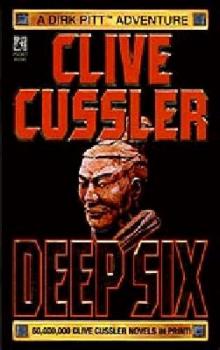 Deep Six
Deep Six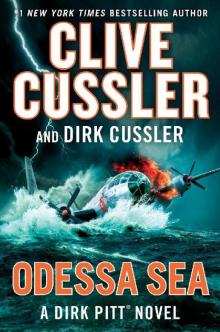 Odessa Sea
Odessa Sea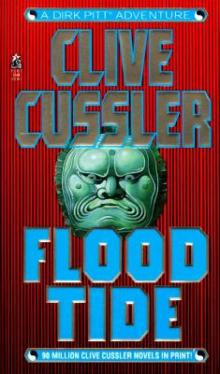 Flood Tide
Flood Tide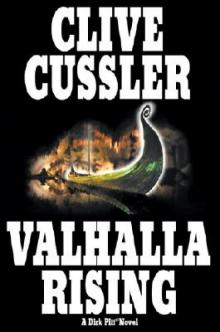 Valhalla Rising
Valhalla Rising Thriller 2
Thriller 2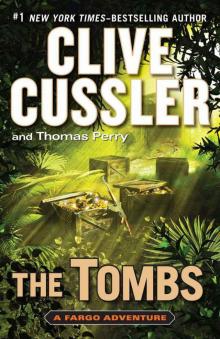 The Tombs
The Tombs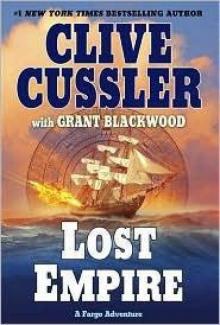 Lost Empire
Lost Empire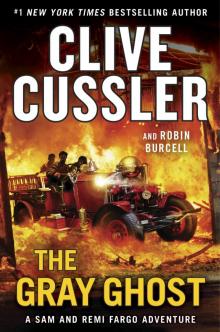 The Gray Ghost
The Gray Ghost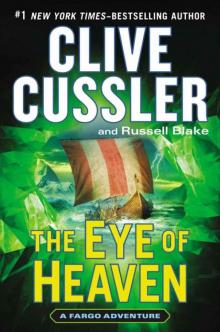 The Eye of Heaven
The Eye of Heaven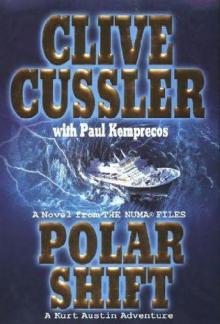 Polar Shift
Polar Shift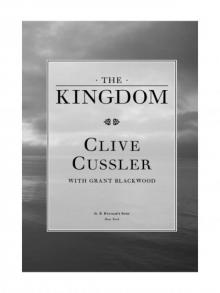 The Kingdom
The Kingdom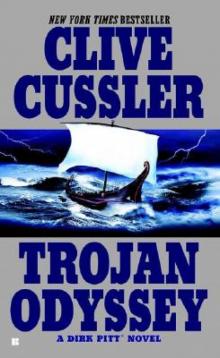 Trojan Odyssey
Trojan Odyssey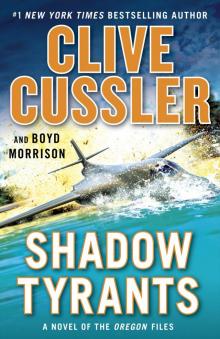 Shadow Tyrants
Shadow Tyrants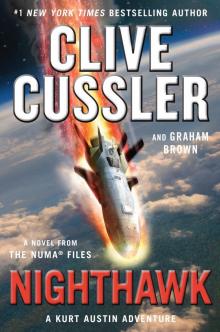 Nighthawk
Nighthawk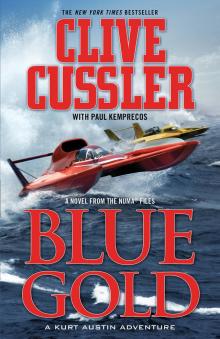 Blue Gold
Blue Gold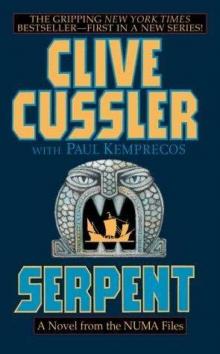 Serpent
Serpent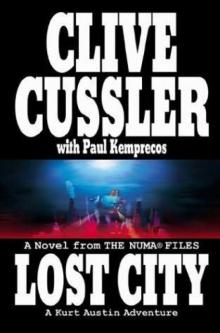 Lost City
Lost City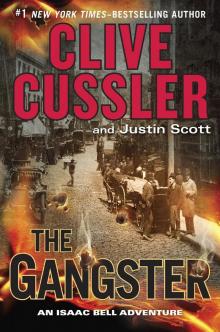 The Gangster
The Gangster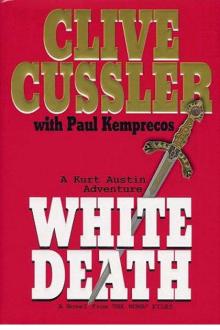 White Death
White Death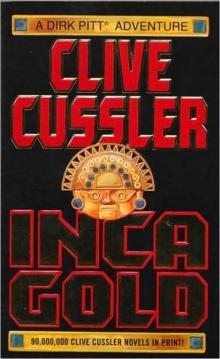 Inca Gold
Inca Gold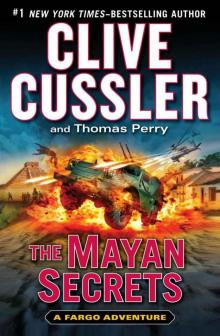 The Mayan Secrets
The Mayan Secrets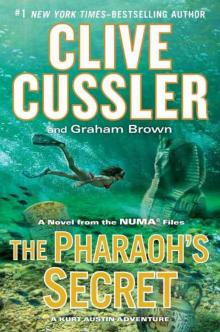 The Pharaoh's Secret
The Pharaoh's Secret The Emperor's Revenge
The Emperor's Revenge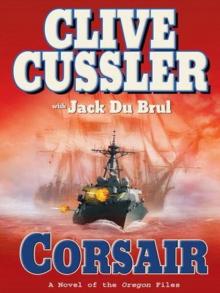 Corsair
Corsair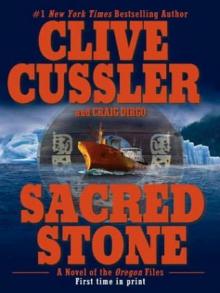 Sacred Stone
Sacred Stone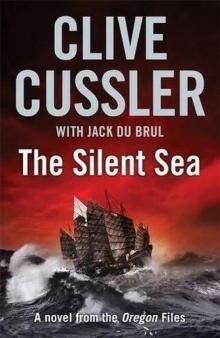 The Silent Sea
The Silent Sea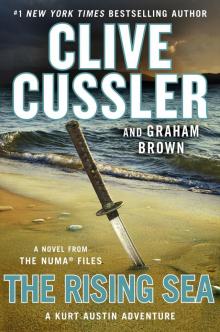 The Rising Sea
The Rising Sea Black Wind
Black Wind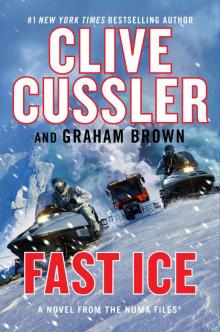 Fast Ice
Fast Ice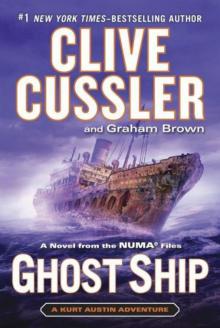 Ghost Ship
Ghost Ship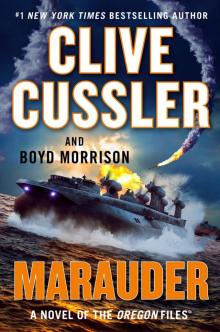 Marauder
Marauder The Thief
The Thief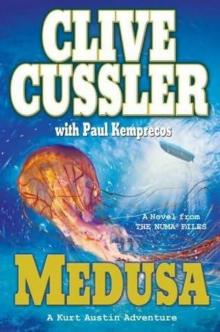 Medusa
Medusa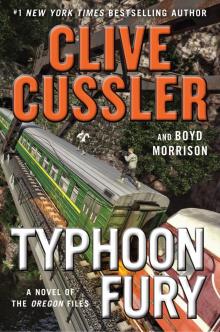 Typhoon Fury
Typhoon Fury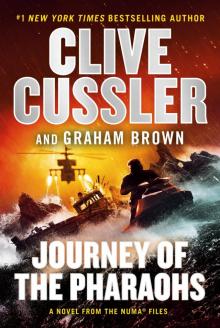 Journey of the Pharaohs
Journey of the Pharaohs The Navigator
The Navigator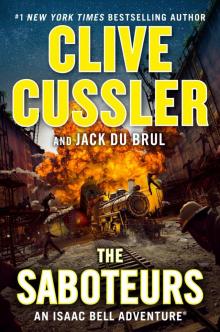 The Saboteurs
The Saboteurs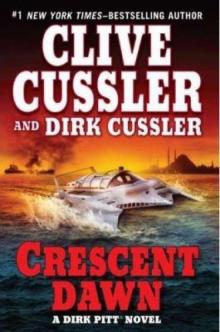 Crescent Dawn
Crescent Dawn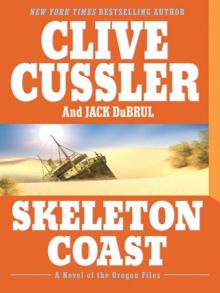 Skeleton Coast
Skeleton Coast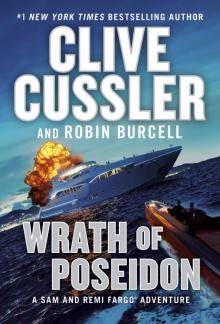 Wrath of Poseidon
Wrath of Poseidon The Mediterranean Caper
The Mediterranean Caper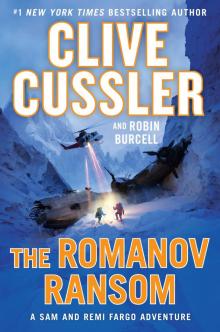 The Romanov Ransom
The Romanov Ransom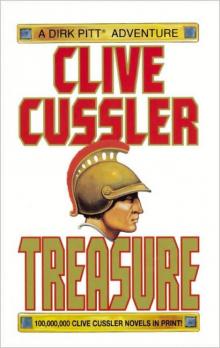 Treasure
Treasure The Race
The Race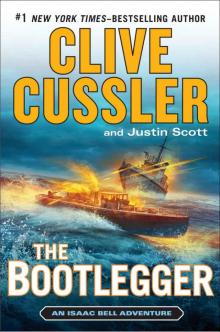 The Bootlegger
The Bootlegger Spartan Gold
Spartan Gold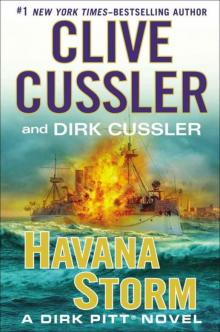 Havana Storm
Havana Storm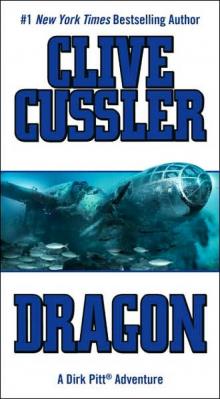 Dragon
Dragon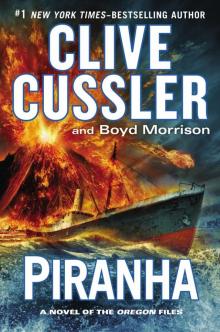 Piranha
Piranha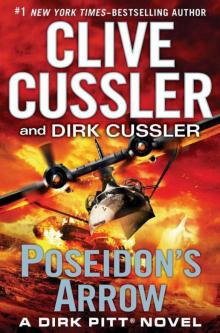 Poseidon's Arrow
Poseidon's Arrow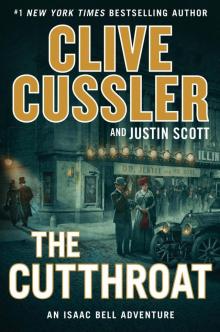 The Cutthroat
The Cutthroat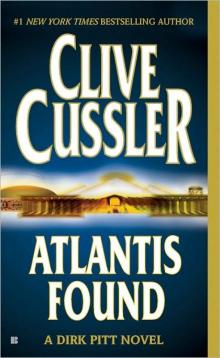 Atlantis Found
Atlantis Found The Jungle
The Jungle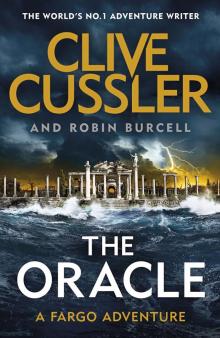 The Oracle
The Oracle Treasure / Dragon / Sahara: Clive Cussler Gift Set
Treasure / Dragon / Sahara: Clive Cussler Gift Set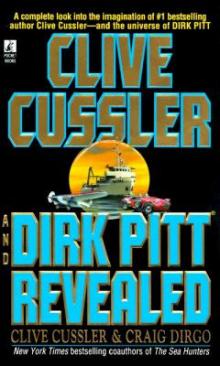 Clive Cussler and Dirk Pitt Revealed
Clive Cussler and Dirk Pitt Revealed The Sea Hunters
The Sea Hunters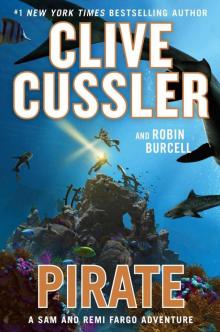 Pirate
Pirate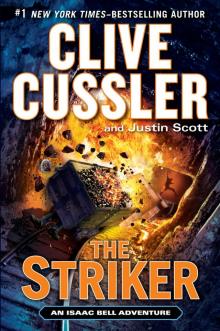 The Striker
The Striker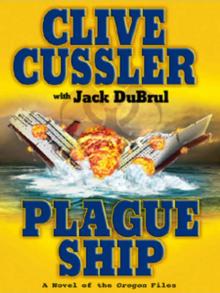 Plague Ship
Plague Ship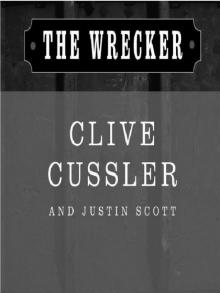 The Wrecker
The Wrecker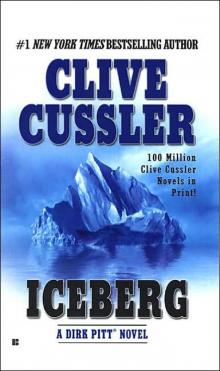 Iceberg
Iceberg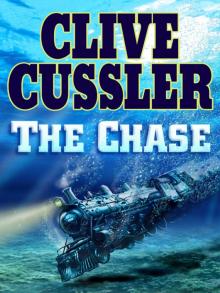 The Chase
The Chase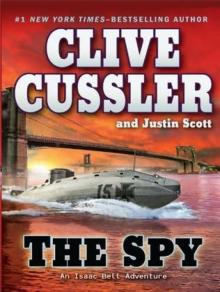 The Spy
The Spy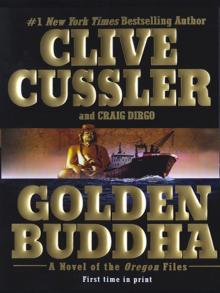 Golden Buddha
Golden Buddha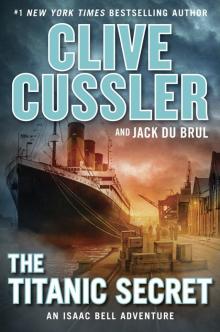 The Titanic Secret
The Titanic Secret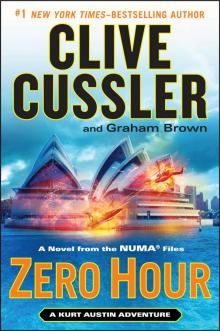 Zero Hour
Zero Hour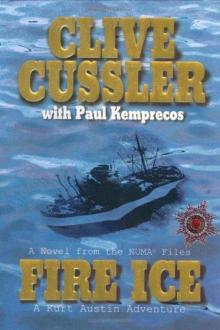 Fire Ice
Fire Ice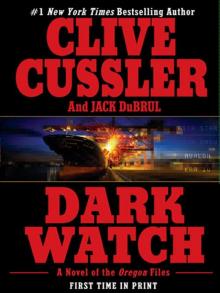 Dark Watch
Dark Watch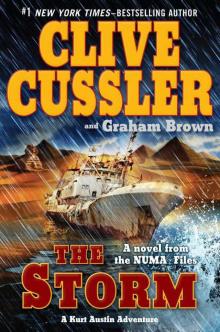 The Storm
The Storm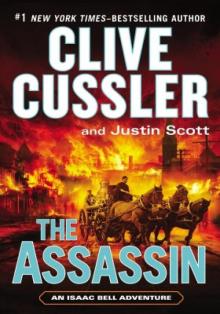 The Assassin
The Assassin Vixen 03
Vixen 03 Arctic Drift
Arctic Drift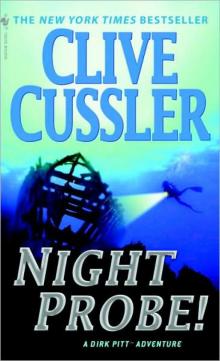 Night Probe!
Night Probe!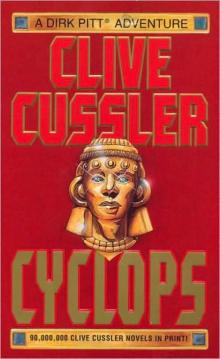 Cyclops
Cyclops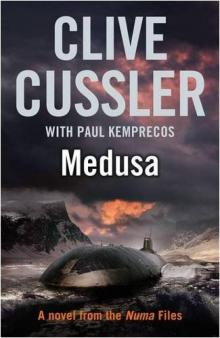 Medusa nf-8
Medusa nf-8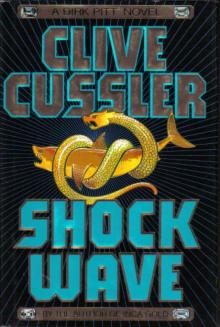 Shock Wave dp-13
Shock Wave dp-13 Marauder (The Oregon Files)
Marauder (The Oregon Files)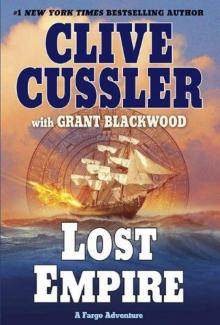 Lost Empire fa-2
Lost Empire fa-2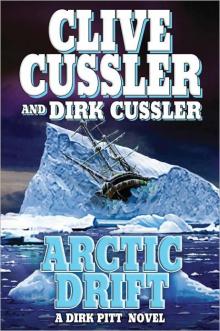 Arctic Drift dp-20
Arctic Drift dp-20 Dirk Pitt 22 - Poseidon's Arrow
Dirk Pitt 22 - Poseidon's Arrow Treasure of Khan dp-19
Treasure of Khan dp-19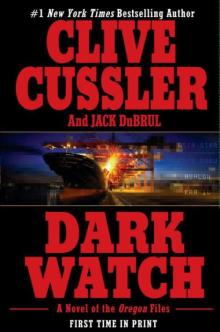 Dark Watch of-3
Dark Watch of-3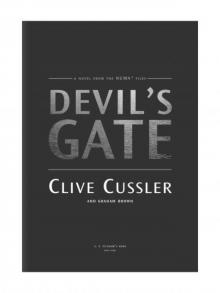 Devil's Gate
Devil's Gate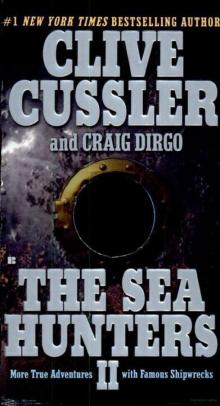 The Sea Hunters II: More True Adventures with Famous Shipwrecks
The Sea Hunters II: More True Adventures with Famous Shipwrecks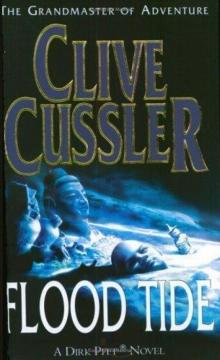 Flood Tide dp-14
Flood Tide dp-14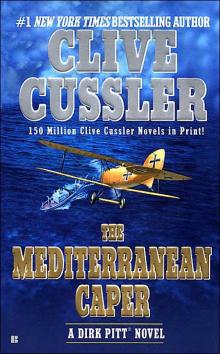 The Mediterranean Caper dp-2
The Mediterranean Caper dp-2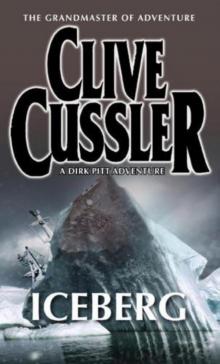 Iceberg dp-3
Iceberg dp-3 Sahara dpa-11
Sahara dpa-11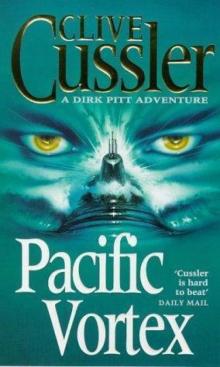 Pacific Vortex! dp-1
Pacific Vortex! dp-1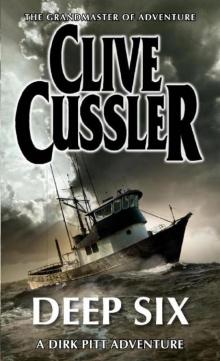 Deep Six dp-7
Deep Six dp-7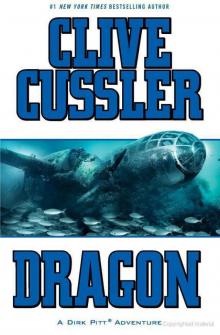 Dragon dp-10
Dragon dp-10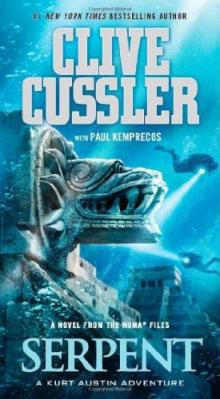 Serpent nf-1
Serpent nf-1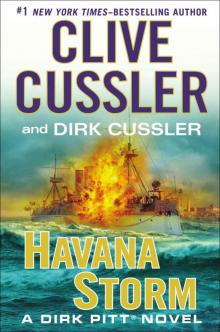 Havana Storm (Dirk Pitt Adventure)
Havana Storm (Dirk Pitt Adventure)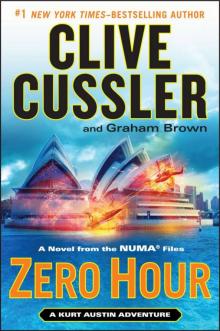 Zero Hour nf-11
Zero Hour nf-11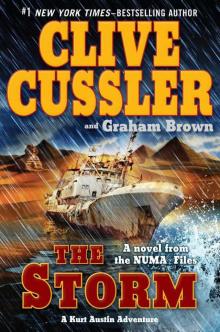 The Storm nf-10
The Storm nf-10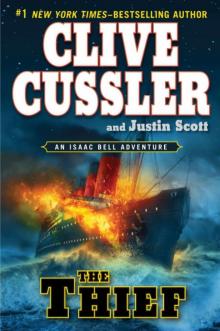 The Thief ib-5
The Thief ib-5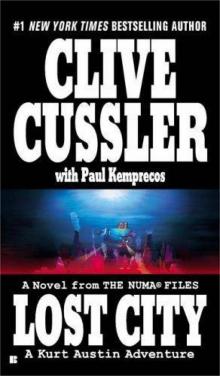 Lost City nf-5
Lost City nf-5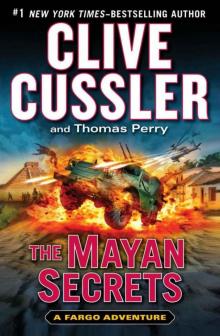 The Mayan Secrets fa-5
The Mayan Secrets fa-5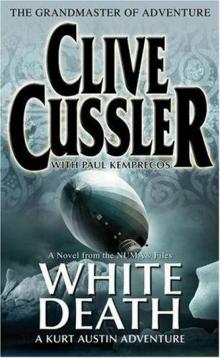 White Death nf-4
White Death nf-4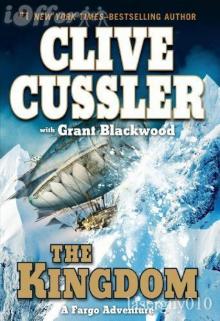 The Kingdom fa-3
The Kingdom fa-3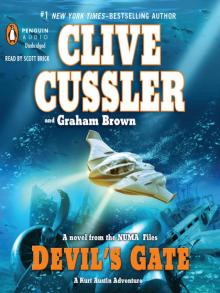 Devil's Gate nf-9
Devil's Gate nf-9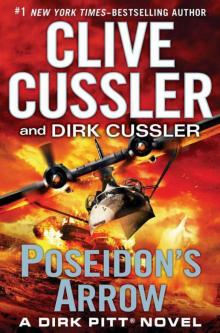 Poseidon's Arrow dp-22
Poseidon's Arrow dp-22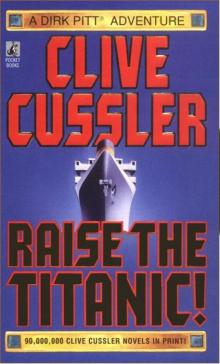 Raise the Titanic dp-4
Raise the Titanic dp-4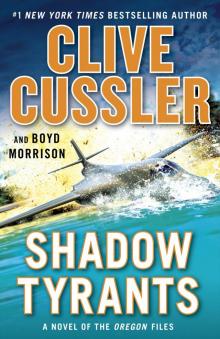 Shadow Tyrants--Clive Cussler
Shadow Tyrants--Clive Cussler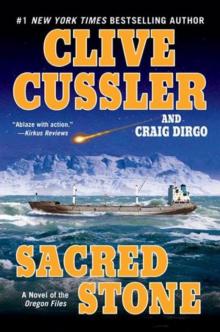 Sacred Stone of-2
Sacred Stone of-2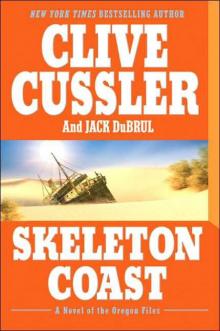 Skeleton Coast tof-4
Skeleton Coast tof-4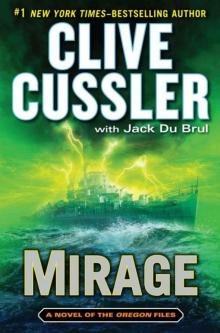 Mirage tof-9
Mirage tof-9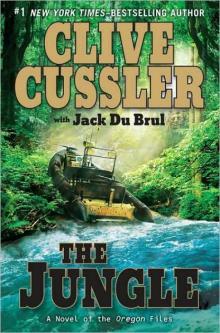 The Jungle of-8
The Jungle of-8 The Emperor's Revenge (The Oregon Files)
The Emperor's Revenge (The Oregon Files) Golden Buddha of-1
Golden Buddha of-1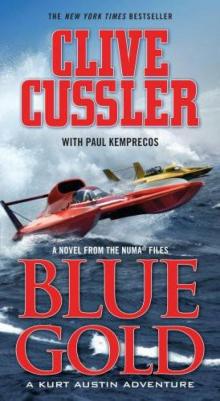 Blue & Gold
Blue & Gold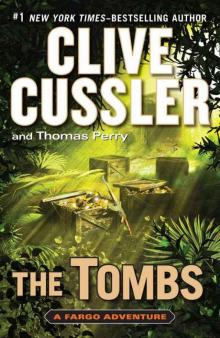 The Tombs fa-4
The Tombs fa-4 Inca Gold dp-12
Inca Gold dp-12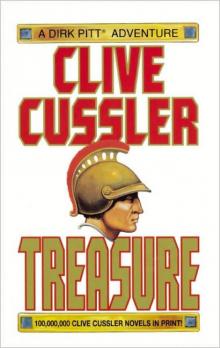 Treasure dp-9
Treasure dp-9 Atlantis Found dp-15
Atlantis Found dp-15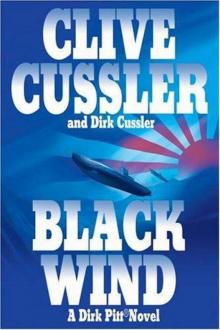 Black Wind dp-18
Black Wind dp-18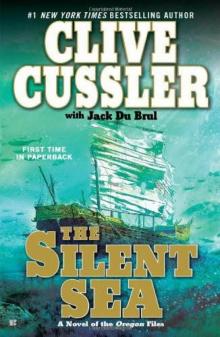 the Silent Sea (2010) tof-7
the Silent Sea (2010) tof-7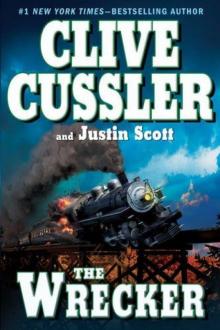 The Wrecker ib-2
The Wrecker ib-2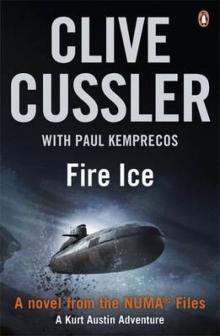 Fire Ice nf-3
Fire Ice nf-3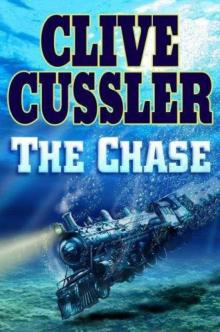 The Chase ib-1
The Chase ib-1 Sahara
Sahara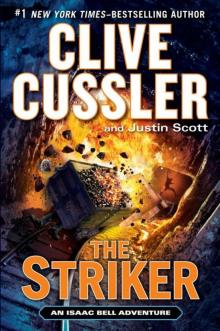 The Striker ib-6
The Striker ib-6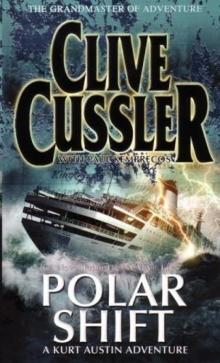 Polar Shift nf-6
Polar Shift nf-6 The Race ib-4
The Race ib-4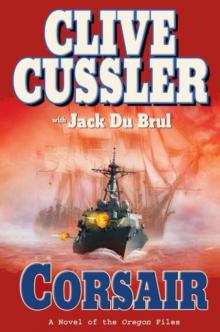 Corsair of-6
Corsair of-6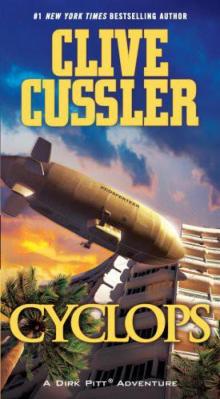 Cyclops dp-8
Cyclops dp-8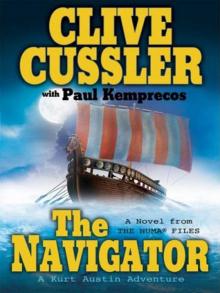 The Navigator nf-7
The Navigator nf-7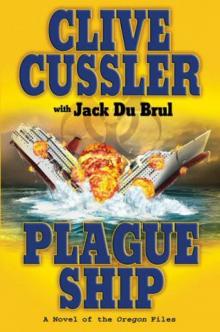 Plague Ship tof-5
Plague Ship tof-5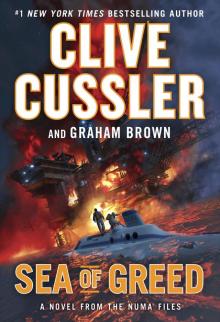 Sea of Greed
Sea of Greed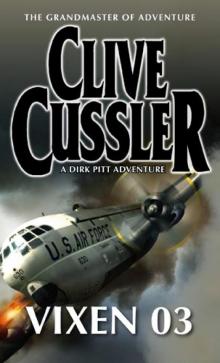 Vixen 03 dp-5
Vixen 03 dp-5 Thriller 2: Stories You Just Can't Put Down
Thriller 2: Stories You Just Can't Put Down